Lithuania is a small Baltic state in the North-East of Europe, that has experienced different events throughout its history which were not always favorable for the country and its population.

History of Lithuania
The heterogeneity of the population of Lithuania is of great interest in the historical context. On the one hand, Lithuanians had their own state in the form of the Grand Duchy of Lithuania (GDL), the name of which already mentions the ethnicity.
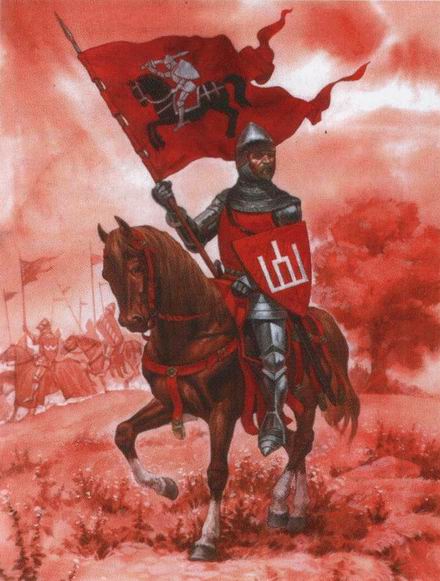
A warrior of the Grand Duchy of Lithuania, XIV century. Reconstruction by V. Ljahor
It is now known that the Baltic ethnicities, as well as Belarusians and Ukrainians, formed the ethnic basis of this state. And while the territories of the current Latvia, Moldova, Poland, Russia, Ukraine, Estonia and even Lithuania (!) itself were not fully included in the GDL, the current territory of Belarus was the obvious geographical center and the demographical basis of the state. The ancestors of Lithuanians were the basis of the political and governmental power and later, probably, Poles. Although, for example, questions concerning the official language and the language used by the population are still under debate.

Lithuanian archers attacking a Teutonic knight
On the other hand, the country has experienced a phase of bloody wars during which the territory was simply occupied by various forces. No state can be created during such turbulent times. The major European political powers after the collapse of the Polish-Lithuanian Commonwealth were located in such a way that the territory of the current Baltic states, Belarus and Ukraine were on the verge of the clash of interests (or civilizations, if you like). The inclusion of the country in the Russian Empire has suppressed its independence in favor of creating a more global state. Such events are unlikely to cause positive emotions in Lithuanians. In this respect, today’s Lithuanian position is aimed at condemning the actions of both the USSR and the Nazi Germany.
Continuing on this matter, Wikipedia gives us an interesting example. More specifically, the differences in the headlines of the articles covering the division of the Baltic states between the USSR and the Nazi Germany (as noted by my colleague in his recent material). So, the same Wikipedia article uses different names depending on the selected language. The Russian language uses “accession”, the official Belarusian language uses “accession or occupation”, the Belarusian Taraškievica (a less Russified version of the Belarusian language) uses “occupation”, this word is also used in Latvian, Polish and Ukrainian languages. There is a separate article about the “Occupation of Estonia” in Estonian and in Lithuanian, the phrase “Occupation of Lithuania” redirects you to the article “History of Lithuania”.
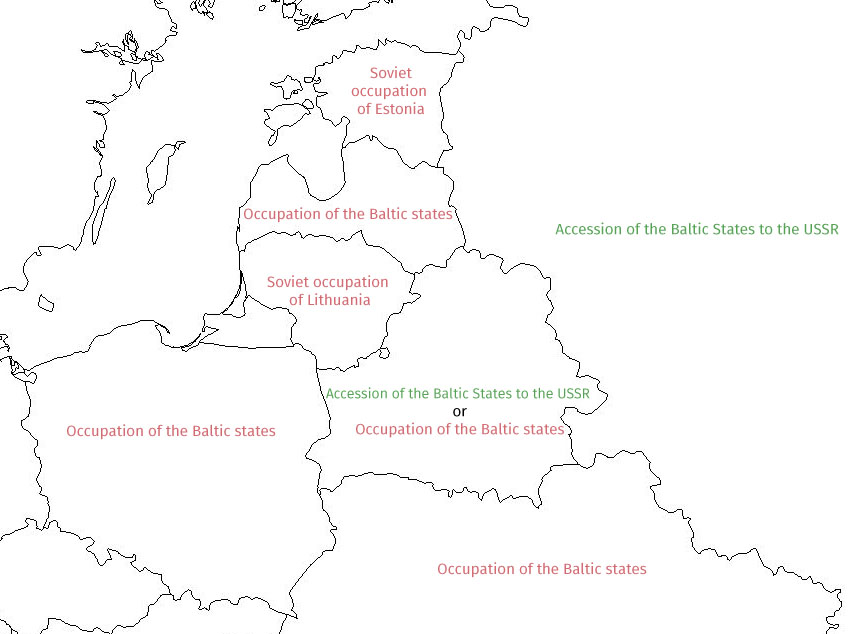
How politics has an effect on the online encyclopedia that claims objectivity
So, although Russia condemns the treaties of the USSR with the Nazi Germany, but either because of the large number of Communists in the country or because of resentment for the lost and “ungrateful” region, in any case, something does not allow to openly announce the occupation and the condemnation of the criminal actions of the Soviet state. It is well known that all countries have done a lot of crimes in the past and to recognize them is to make an adequate look at the past. But that’s a different topic.
One way or another, the state symbols of Lithuania couldn’t evolve property both in the Russian Empire and the Soviet Union before gaining independence at the end of the last century.
Symbols of Lithuania
At first, it would be handy to get acquainted with the main symbols of Lithuania. There are only two of them — the “Columns” and the “Apostolic Cross”. Both symbols are quite old. We should also mention the “Pahonia” (“pursuit”) coat of arms that was repeatedly used on the various coat of arms and seals and note that the current coat of arms of Lithuania is called “Vytis” (“pursuer”) which originates from “Pahonia”.
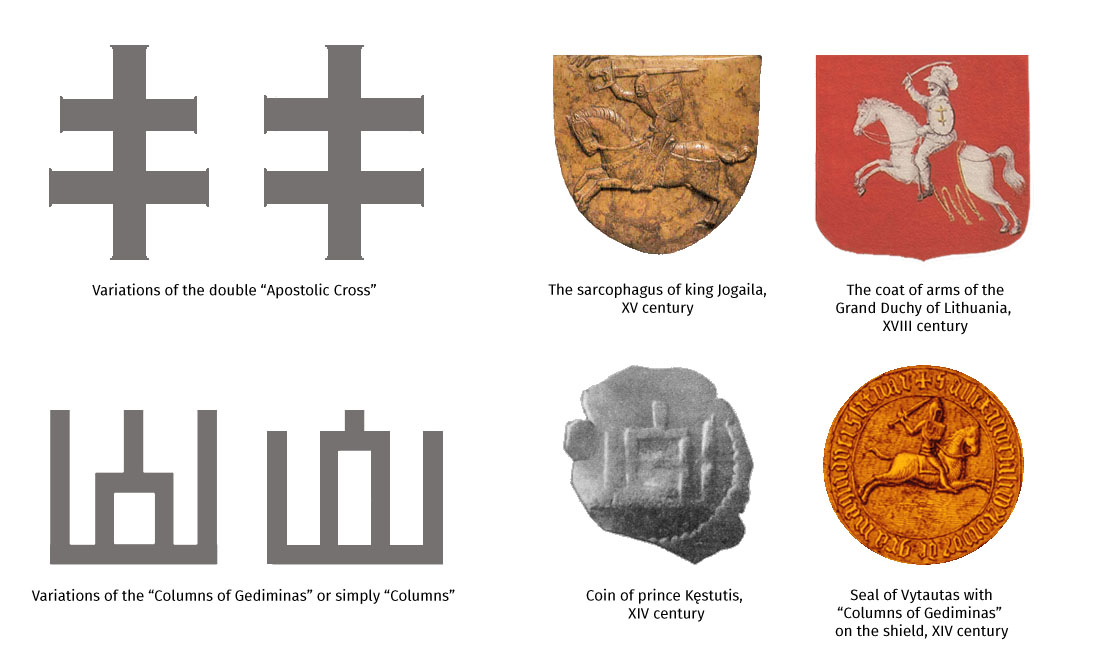
The symbols of Lithuania
The “Columns” are also called as the “Columns of Gediminas” or “Pillars of Gediminids” since this symbol is often seen as the coat of arms of the Gediminids — rulers of the GDL. According to the legends, this coat of arms has Italian roots, but this symbol was also used by the Vytautas and some szlachta (“nobles”).

An altar, a gravestone, and a modern monument
The frequent use in Lithuania of the historical symbol is encouraging. It wouldn’t be a difficult task to find many places that use this symbol.
Speaking about the cross we can add that it be seen in two variations, it also has similarities with the Lorraine and the Hungarian heraldic crosses. There are different assumptions about the interpretation of the symbolism of this cross.
Flag of Lithuania
The first national symbol of Lithuania can be considered the flag of the Grand Duchy of Lithuania.

A reconstructed image of the earliest picture of the banner of the GDL
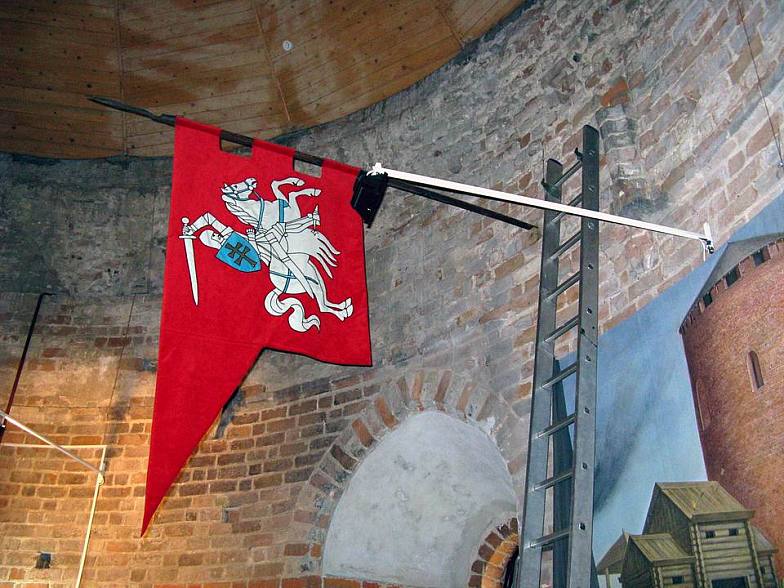
The banner of the GDL in the Kamyenyets tower, Belarus
After the unification of the GDL and the Kingdom of Poland in the result of the Union of Lublin, the Polish-Lithuanian Commonwealth was formed which lasted slightly more than two hundred years.
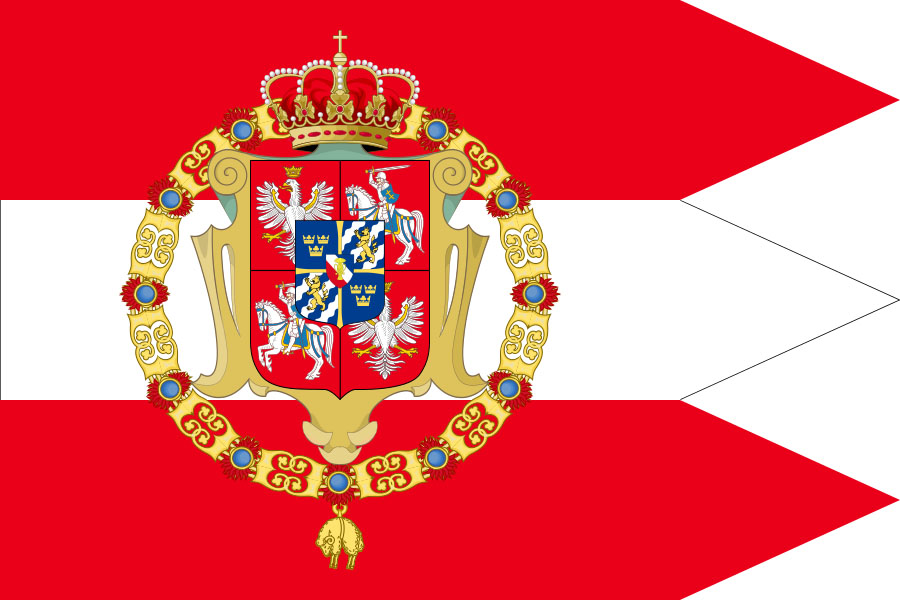
Flag of the Commonwealth
After the final partition of the Commonwealth and the abolition of the state as a result of the wars, Lithuanian territory became part of the Russian Empire. The Polish-Lithuanian nobility, trying to restore the statehood, raised insurrections several times. The next flag that is relevant to Lithuania is a badge of the Lithuanian uhlans in Napoleon’s army, which the dissenters joined in 1812.
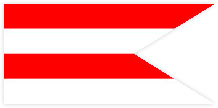
The badge of the Lithuanian uhlans in Napoleon’s army
Different versions and designs of the new flag of Lithuania were created between the early nineteenth century and the beginning of the twentieth.
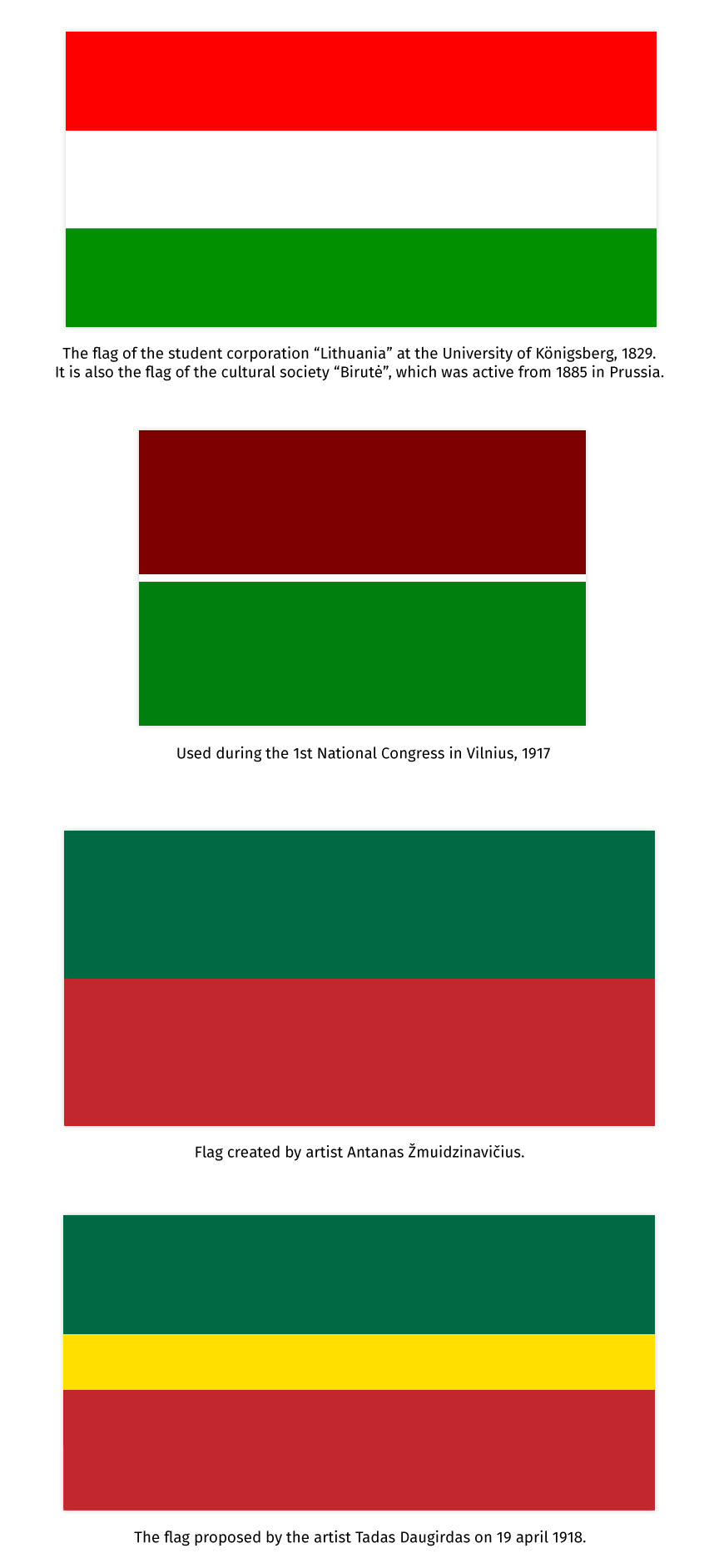
Versions of the flag of Lithuania
“Pahonia” and the bicolor flags were used at the Vilnius Conference in 1917.
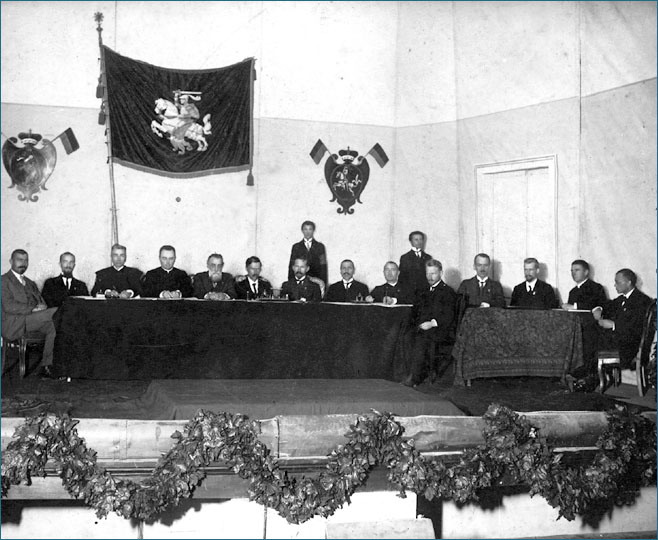
The Vilnius Conference held from 18 to 22 September 1917
The modern version of the flag formed only to the 1917–1918 years. The new flag was created with the consideration of culture and the national colors of Lithuanian clothes. A number of artists and outstanding personalities of Lithuania took part in its creation. On 19 April 1918, the flag was adopted as a temporary measure.

The flag of Lithuania from 1918 to 1940
The flag that is using the current colors of the Lithuanian flag, the “Columns” symbol, the “Pahonia” coat of arms and the flag of Lithuania Minor are depicted in the Act of Tilsit on the unification of the Lithuania Minor and the Lithuania Proper into a single Lithuania on 30 November 1918:

Act of Tilsit
Also, various projects were proposed in 1936, though the flags from the top row have a strong association with the current flag of South Ossetia.
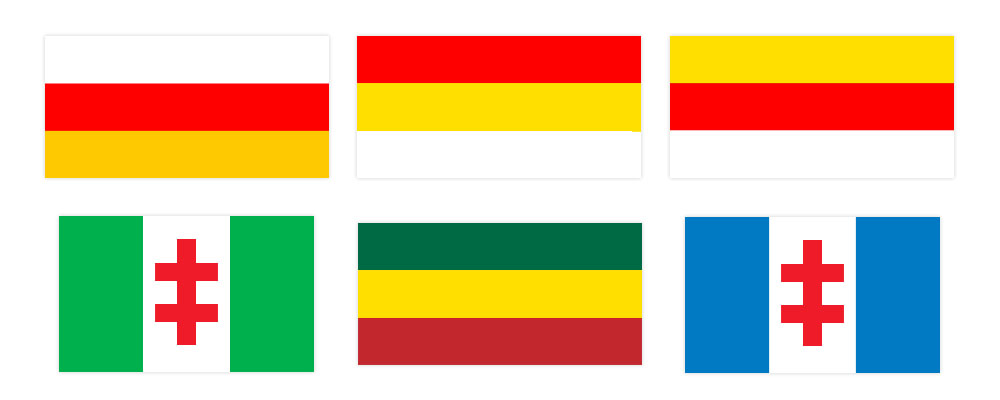
Drafts of the flag of Lithuania in 1936
The next flag of Lithuania can be called the flag of the Soviet puppet state — the Lithuanian Soviet Republic which lasted only about three months. The flag of this “country” was just a red cloth without any additions. Red, apparently, symbolized the Soviet power besides which, as it seems, nothing more was needed.

The flag of the Lithuanian Soviet Republic
The next flag was even more intriguing than the previous. Actually, not — it was just its copy. The Lithuanian–Byelorussian Soviet Socialist Republic or simply Litbel, which we’ve mentioned before, got the same “stunning” in its execution flag. The state lasted a couple of months.

Flag of Litbel
It is also worth mentioning another puppet state, this time of Polish origin — the Republic of Central Lithuania, which existed for two years (1920–1922), and then became part of Poland.
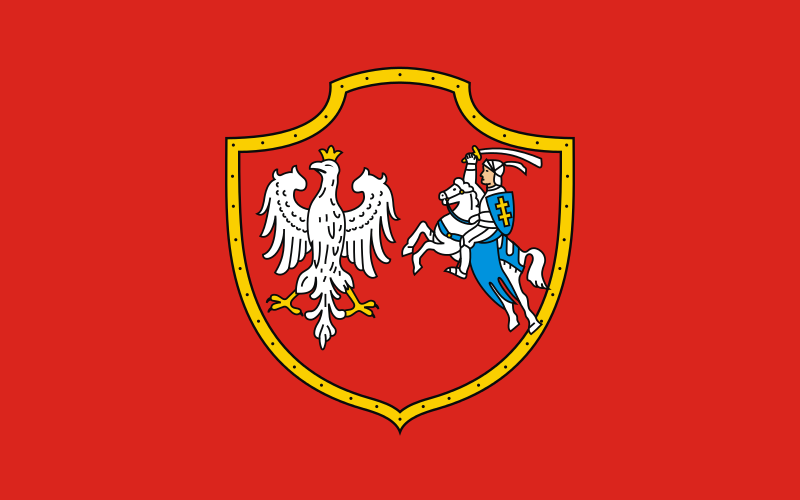
Flag of the Republic of Central Lithuania
From 1918 to 1940 Lithuania regained the adopted flag and existed as a relatively independent state. The territory, however, of Lithuania of that period was less than its current borders.
With the advent of the Soviet power in 1940, the Lithuanian Soviet Socialist Republic or the Lithuanian SSR (LSSR) was created. The state symbolic of the Soviet Republic didn’t change much at first — an inscription “Lithuanian SSR” was added in Lithuanian.
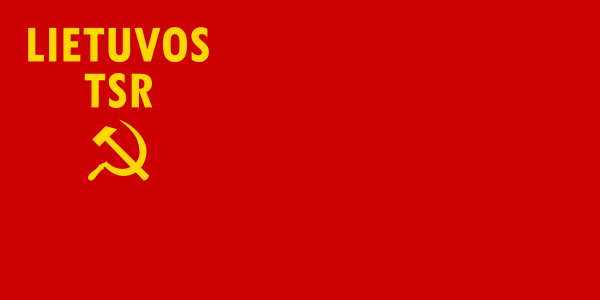
Flag of the Lithuanian SSR from 1940
But this flag was used for a relatively short time and was abolished in 1953. After that, a green stripe and a white separating stripe were added, the inscription was removed and a star was added — a popular Communist symbol.
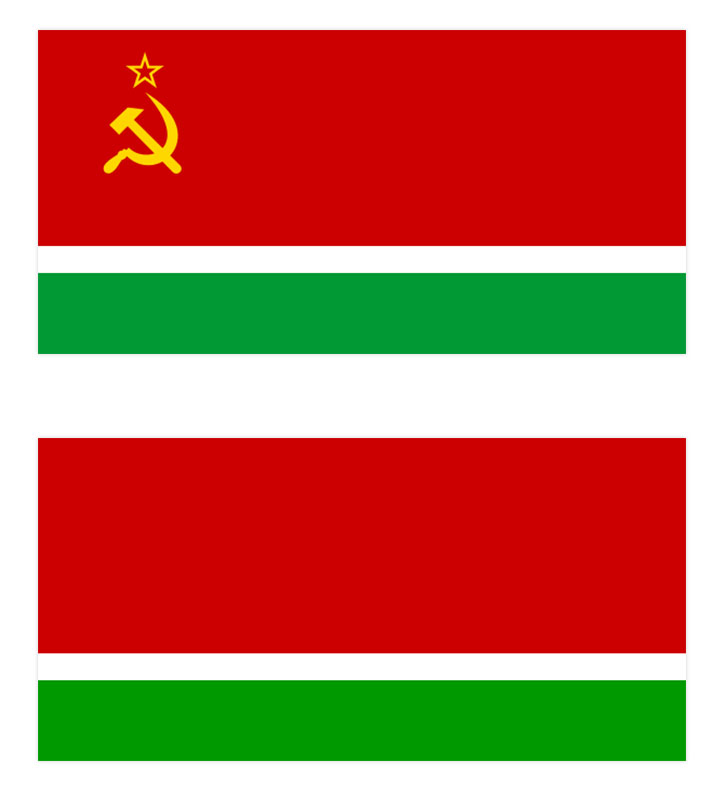
Flag of the Lithuanian SSR from 15 July 1953 (front and back)
An interesting fact is the prosecution of the public display of the flag of the Lithuanian SSR in Lithuania. It should be added that the public demonstration of flags of both the USSR and the Nazi Germany are also criminally prosecuted. However, the swastika itself without any connections with the World War II was recognized as the historical heritage of the Balts by the Lithuanian court. Clearly, the swastika is a much more ancient symbol than the symbols of the Third Reich and, therefore, the actions of the Lithuanian authorities in this respect should not provoke any surprise or indignation. And the ban of Soviet at Nazi Germany symbols can be attributed to the historical pain and reluctance to be part of the militant superpowers.
If we assume that Lithuanians would have recognized the power of the Soviets or the Nazis, then it would be interesting to look at the flag of Lithuania as a part of the Soviet Union or Nazi Germany, but taking into account the historic symbols of Lithuania.
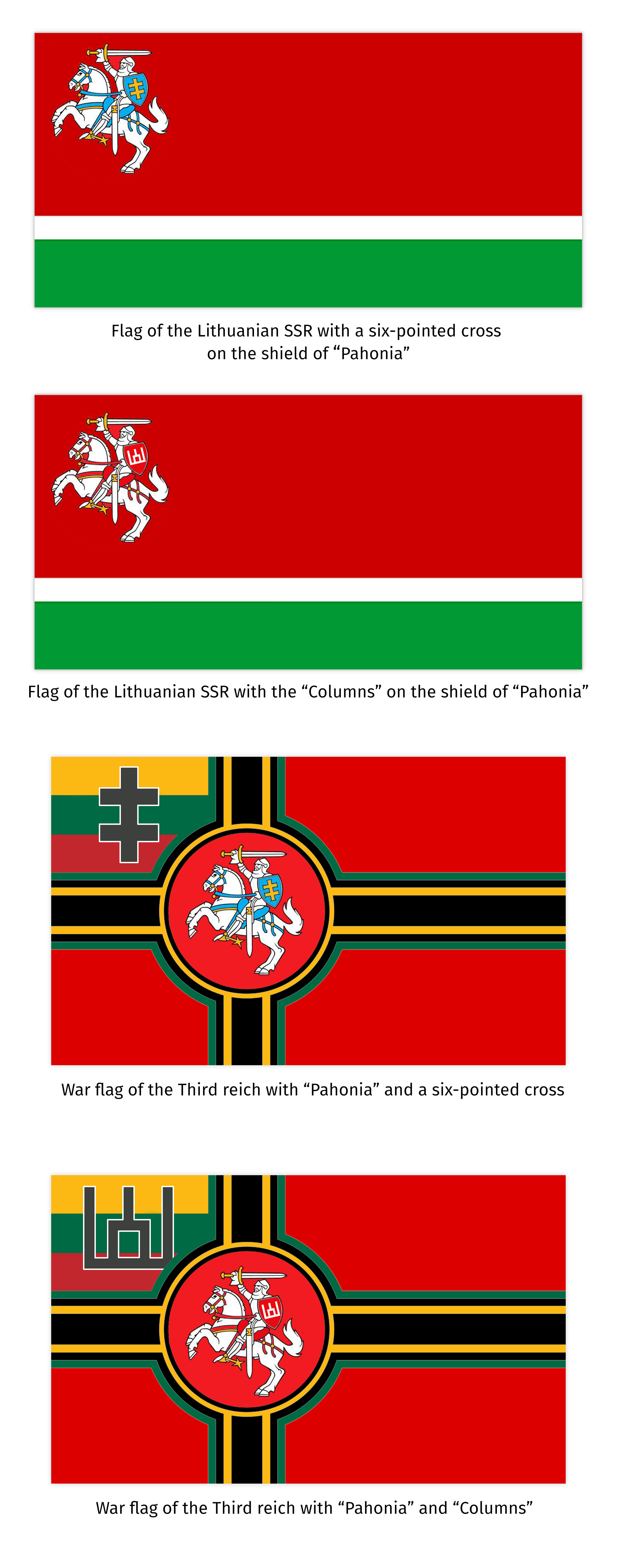
Drafts of the flag of Lithuania as part of USSR and Nazi Germany
Also in the history of the Lithuanian flag, there were sometimes suggestions to use the “Pahonia” coat of arms as a canton, as this symbol is directly connected with the symbols of the GDL, many Belarusian cities, and ancient seals.
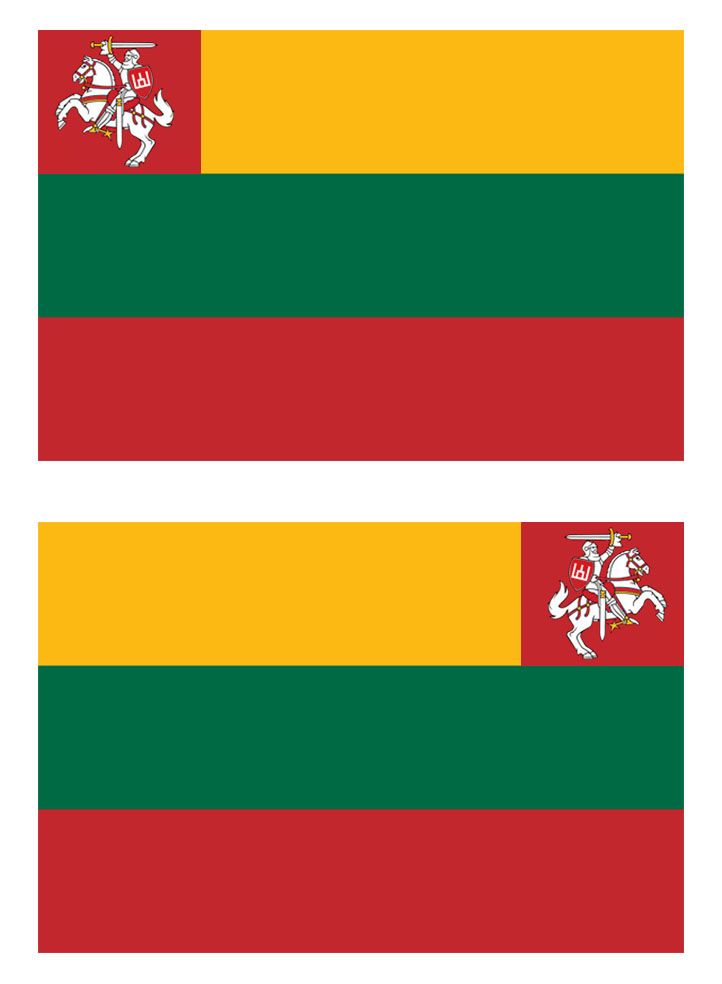
Flag of Lithuania with “Pahonia” with “Columns” as a canton
The current flag of Lithuania is a bit different from the 1918–1940 version in its ratio of the sides.
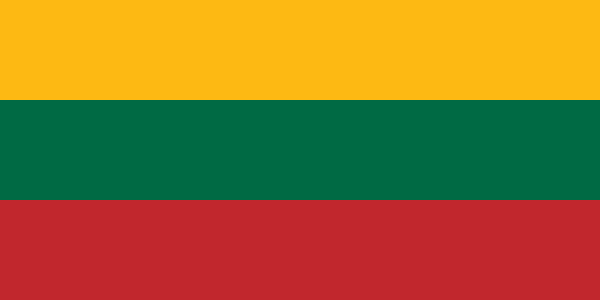
Current flag of Lithuania
Few people know that Lithuania has two official flags.
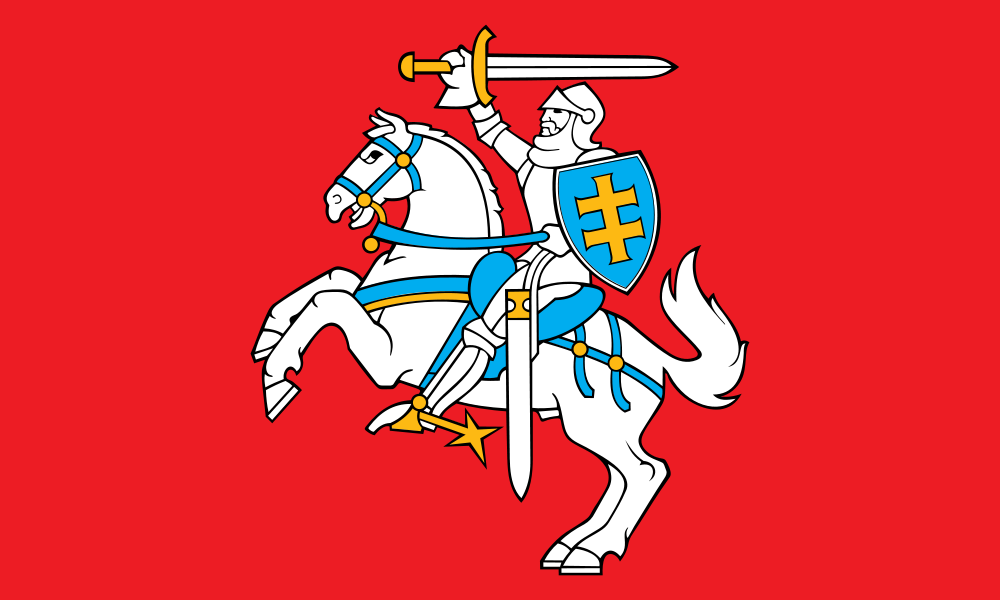
Historical flag of Lithuania
The historical coat of arms “Pahonia” was reconstructed several times in the course of time, but the modern version of “Pahonia” can be used as a flag while representing Lithuania.
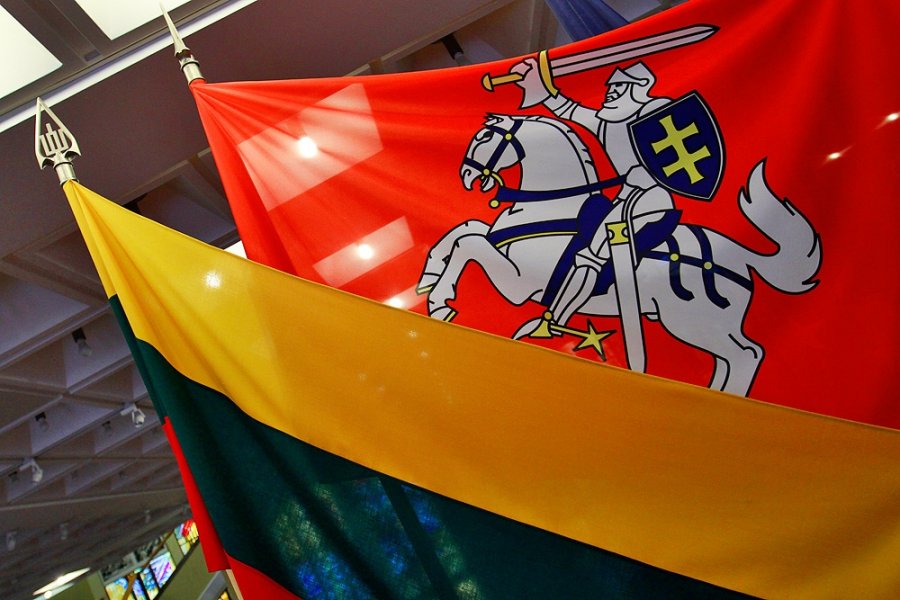
Official flags of Lithuania. Note the tip of the flag in the form of “Columns”
Let’s also take a look at a couple of new designs of the flag of Lithuania as well the proposed project flag in 2001 with a Scandinavian cross:

New projects of the flag of Lithuania
As is often the case, there are several interpretations of the symbolism of the colors. One of the options is as follows:
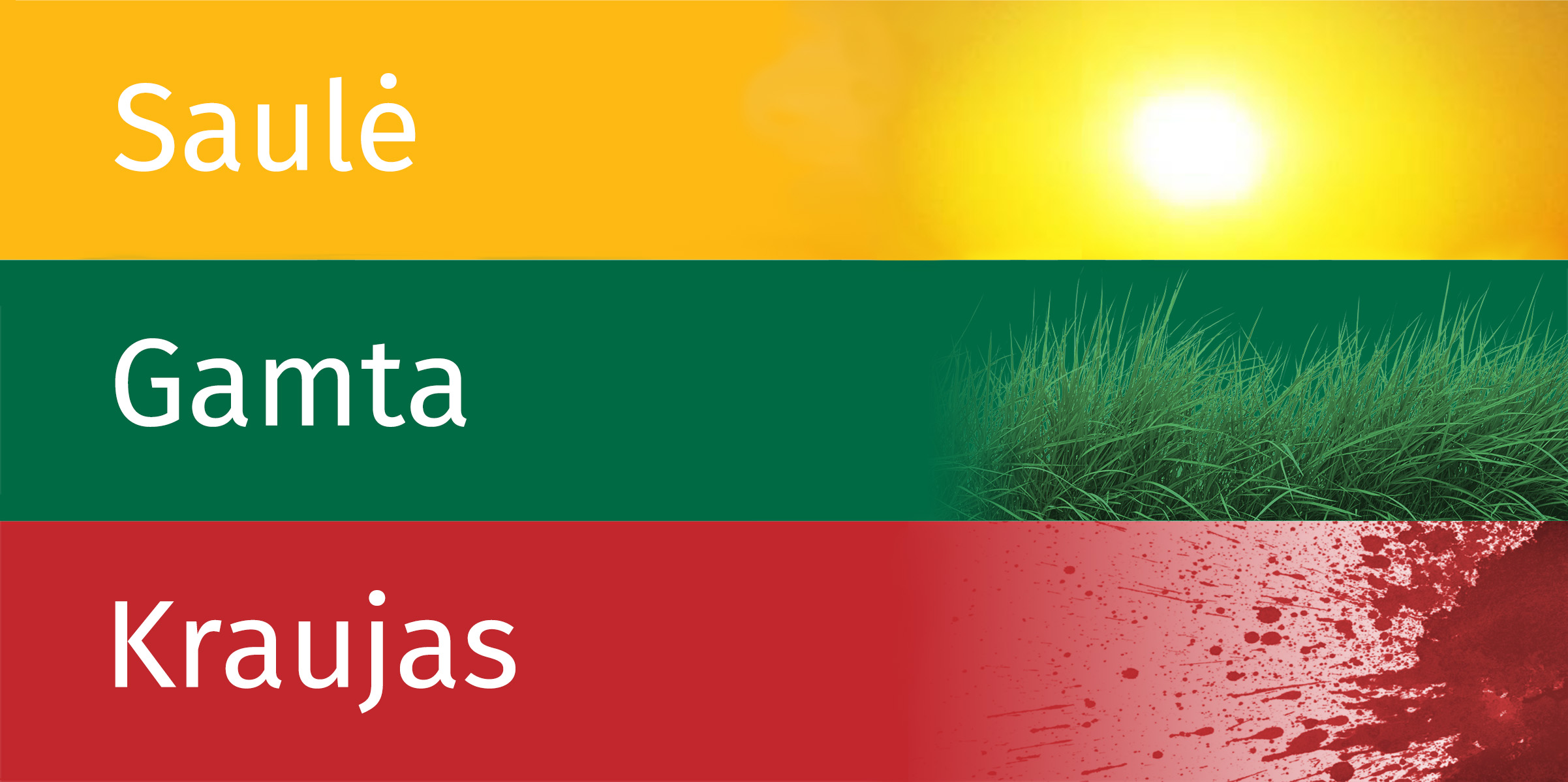
The Sun (and light), nature and the blood that was shed for Lithuania. Inscriptions are in Lithuanian
Lithuania and Belarus
Looking at the history of Lithuania most direct relations with Belarus can be assumed. After all, Belarus and Lithuania were a single country for hundreds of years. Today the Lithuanian authorities declare the construction of a modernized border with Belarus by 2020. I don’t want to accuse anyone in this decision and sound just like the Communists with their “What a great country did we lose!”and it’s clear that people probably had a much harder time living in the 14–15 centuries regarding physical labor and opportunities, human rights and individual wealth than in current Belarus and Lithuania. Of course, this “wall” will not be discussed as much as the one Trump is planning to erect, but from a historical point of view, this “wall” has a much greater impact and meaning.
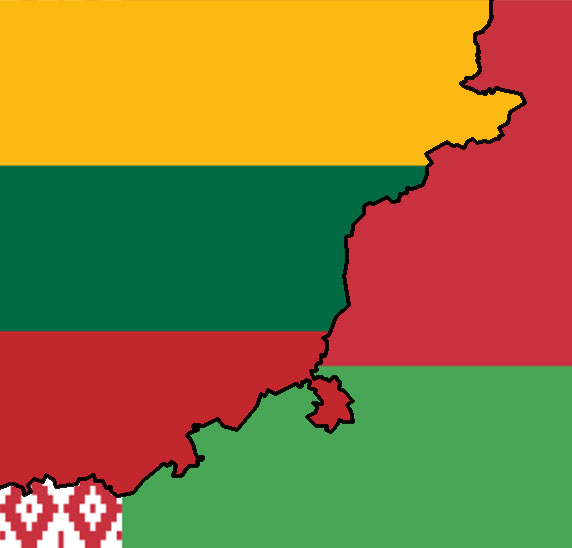
However, it’s philosophically ironic. Once being a separate political force that was one of the largest formations in Europe with its interests in the region, now it is torn to pieces that not only have nothing in common but are even divided by a border of new political interests and alliances.
Common historical legacy isn’t discussed much. The fact is that Belarus is oriented to the East and Lithuania to the West. In the last hundred years, Belarus has integrated more and more with Russia, moving away from the Polish-Lithuanian past as far as possible. Lithuania, on the contrary, after gaining independence has made its choice in favor of European values and culture.
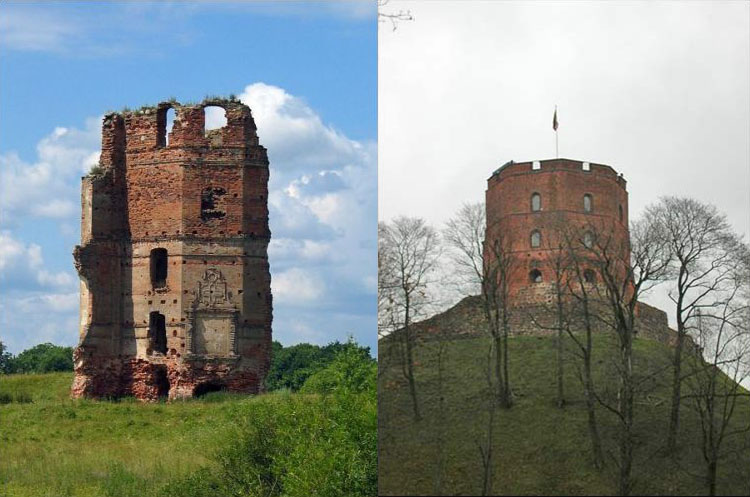
The ruins of the tower of the Bely Kovel castle (Smaliany, Belarus) and the Gediminas Tower (Vilnius, Lithuania)
It’s remarkable how quickly things change in the world in general, not to mention the present. Probably, we, people of today do not have to be responsible for what our ancestors did hundreds of years ago, but the current situation in Eastern Europe looks very strange in relation to history. Perhaps, the current border of the Baltic states and the Eastern Europe is more in line with the nations inhabiting them. But does it correspond to the spirit of the time, the wishes of the people and history? Hardly.



























Comments